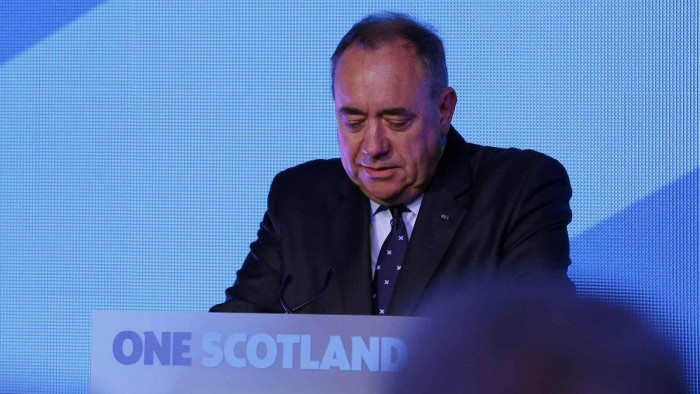Bad news for Salmond as No trickle turns to a flood

Roula Khalaf, Editor of the FT, selects her favourite stories in this weekly newsletter.
By the time Alex Salmond boarded a private jet at Aberdeen airport to fly south to Edinburgh, the bad news was already pouring in.
By 4.30am the trickle of results was turning into a flood, each declaration draining away his hopes of victory in Scotland’s independence referendum.
The Yes campaign secured victories in Glasgow and Dundee – results which might have been unthinkable even a few months ago. But in the context of what was happening elsewhere in Scotland, Mr Salmond knew that they were not going to be enough.
Across Scotland from Dumfries in the south to Shetland in the north, No votes were piling up. Voter turnouts of up to 90 per cent confirmed that the No camp’s vaunted “silent majority” was turning out to reject independence.
Mr Salmond had hoped for huge turnouts among disgruntled working class Labour voters in Scotland’s biggest cities, hoping to channel their disillusionment into big Yes votes. But it did not materialise as he had hoped.
In the event, Glasgow voted by 53 to 47 in favour of independence, but the margin of victory was not as big as the Scottish first minister had hoped. Crucially the turnout of 75 per cent was low compared with elsewhere in the country.
In Dundee, Mr Salmond’s “City of Yes”, there was a pro-independence vote of 57 per cent to 43 per cent, but again it was far less than the 65 per cent to 35 per cent margin some Yes campaigners had predicted days earlier. Turnout in the city was below 80 per cent.
Elsewhere in Scotland there was a wall of bad news for the independence campaign, including a victory for No in Aberdeen. The Scottish National Party stronghold of Angus voted No, as did Stirling and Falkirk.
In Dumfries, the only part of Scotland to return a Tory MP to Westminster at the last election, the No side won by 66 per cent to 34 per cent.
While the Yes campaign did win in the working class hinterland of Glasgow in North Lanarkshire and West Dunbartonshire, those victories were offset by the piling up of No votes in rural areas and small towns across Scotland.
At shortly after 5am election analysts called the result: No had won by a margin of 55 per cent to 45 per cent.
And as Mr Salmond prepared to concede defeat at Holyrood, the final blow: Edinburgh voted by 61 to 39 per cent to reject his dream that the city should become the capital of an independent state.
As official results showed a victory for the No camp, Mr Salmond said: “I accept the verdict of the people and call on all of Scotland to follow suit. Let us not dwell on the distance we’ve fallen short. Let us dwell on the distance we’ve travelled.”
Comments